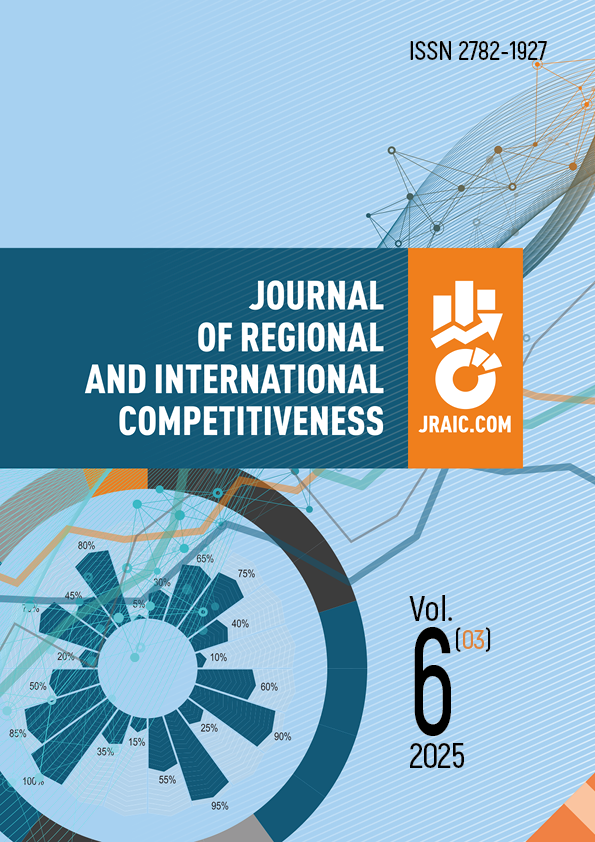Nevinnomyssk, Stavropol, Russian Federation
Nevinnomyssk, Stavropol, Russian Federation
Krasnodar, Krasnodar, Russian Federation
The article examines modern theoretical and applied approaches to Risk-Opportunity Analysis (ROA) in the context of unprecedented volatility of the external economic environment. We propose an innovative economic and mathematical model based on a deep integration of scenario analysis methods and fuzzy theory. It ensures an accurate and comprehensive assessment of risk dynamics. The model facilitates the quantitative assessment of various risk – financial, operational, strategic, and reputational ones. It also identifies the key opportunities in terms of innovative technologies and business model adaptation. Model testing based on sampling data from one of a leading company, 2018-2024. The experimental results demonstrate the high effectiveness and predictive value of model proposed. The research proposes a holistic approach to incorporate both quantitative and qualitative volatility factors, provides realistic and actionable foundation for managerial decision-making. The results obtained show a significant practical potential. Moreover, they ensure companies’ strategic resilience, adaptability to changes, proactive future management, and ultimately secure sustainable competitive advantages.
volatility of the external environment; company risks and opportunities; quantitative risk assessment; fuzzy sets; economic and mathematical modeling
1. Smith, J. R., & Chen, L. (2012). Strategic risk management in complex environments. Journal of Business Strategy.
2. Knight, F. H. (1921). Risk, uncertainty and profit. Boston MA: Hart, Schaffner & Marx.
3. Jones, P. (2014). The Geopolitical Business: Understanding and Managing Global Risks. Palgrave Macmillan.
4. Brynjolfsson, E., & McAfee, A. (2014). The second machine age. New York: W.W. Norton & Company.
5. Stern, N. (2007). The economics of climate change. Cambridge University Press. DOI: https://doi.org/10.1017/CBO9780511817434; EDN: https://elibrary.ru/UQTHPH
6. Kotler, P., & Keller, K. L. (2012). Marketing management. Pearson.
7. Damodaran, A. (2012). Investment valuation: Tools and techniques for determining the value of any asset. New York: John Wiley & Sons.
8. Slack, N., & Lewis, M. (2011). Operations strategy. Pearson.
9. Porter, M. E. (2008). Competitive strategy: Techniques for analyzing industries and competitors. Free Press.
10. Doorley, J., & Garcia, H. F. (2015). Reputation management: The key to successful public relations and corporate communication. New York: Routledge. DOI: https://doi.org/10.4324/9781315879987
11. Teece, D. J. (2010). Business models, business strategy and innovation. Long Range Planning. DOI: https://doi.org/10.1016/j.lrp.2009.07.003
12. Drucker, P. F. (1985). Innovation and entrepreneurship. Harper & Row.
13. Provost, F., & Fawcett, T. (2013). Data science for business: What you need to know about data mining and data-analytic thinking. O'Reilly Media.
14. Ovchinnikova, S., Sekisov, A., Shinkareva, I., Schneider, E., & Tamosh-kina, E. (2020). Implementation of investment and construction projects as part of the interior image formation. In: IOP Conference Series: Materials Science and En-gineering: XIII International Scientific Conference Architecture and Construction 2020, Novosibirsk, September 22-24, 2020. Vol. 953. (p. 012082). Bristol: IOP Pub-lishing Ltd. DOI:https://doi.org/10.1088/1757-899X/953/1/012082. EDN HLYAWN.
15. Lengnick-Hall, C. A., Beck, T. E., & Lengnick-Hall, M. L. (2011). Developing organizational resilience: Toward a process model of proactive adaptation. Organizational Dynamics, 40(3), 194-204.
16. Schoemaker, P. J. H., & Day, G. S. (2009). Scenario planning: A tool for strategic thinking. MIT Sloan Management Review, 51(2), 25-30.
17. Zadeh, L. A. (1965). Fuzzy sets. Information and Control, 8(3), 338-353. DOI: https://doi.org/10.1016/S0019-9958(65)90241-X
18. COSO. (2017). Enterprise Risk Management – Integrating with Strategy and Performance. Committee of Sponsoring Organizations of the Treadway Commission. Retrieved from https://www.coso.org/enterprise-risk-management
19. Westerman, G. and McAfee, A. (2012). The Digital Advantage: How Digital Leaders Outperform Their Peers in Every Industry. Retrieved from http://ide.mit.edu/sites/default/files/publications/TheDigitalAdvantage.pdf
20. Chopra, S., & Meindl, P. (2016). Supply chain management: Strategy, planning, and operation. Pearson Education.
21. Gotsi, M., & Wilson, A. M. (2001). Corporate reputation management: "living the brand". Management Decision, 39(1), 24-34. DOI: https://doi.org/10.1108/EUM0000000005415
22. Pires, Péricles. (2006). Winning through innovation: a practical guide to leading organizational change and renewal. Revista de Administração Contemporânea, 10(1), 177. DOI: https://doi.org/10.1590/S1415-65552006000100013
23. Manyika, J., Chui, M., Brown, B., Bughin, J., Dobbs, R., Roxburgh, C., & Byers, A. H. (2011). Big data: The next frontier for innovation, competition, and productivity. McKinsey Global Institute.
24. Teece, D. J., Pisano, G., & Shuen, A. (1997). Dynamic capabilities and strategic management. Strategic Management Journal, 18(7), 509-533.
25. Friedman, G. (2010). The next 100 years: A forecast for the 21st century. New York: Doubleday.
26. Eccles, R. G., Ioannou, I., & Serafeim, G. (2014). The impact of corporate sustainability on organizational processes and performance. Management Science, 60(11), 2835-2857. DOI: https://doi.org/10.1287/mnsc.2014.1984
27. Kahneman, D. (2011). Thinking, fast and slow. Farrar, Straus and Giroux.
28. Mitroff, I. I. (2004). Crisis management: Planning for the inevitable. Sage Publications.
29. Stacey, R. D. (2007). Strategic management and organisational dynamics: The challenge of complexity. Pearson Education.




















